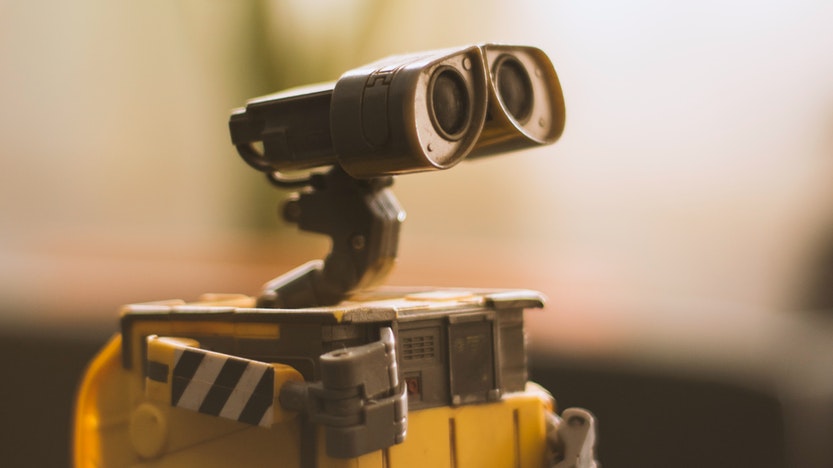Earth, 2050 –
“Good morning ma’am, would you like a weather forecast on this fine Sunday afternoon,” spoke Marvin, the Animatronic Automated Assistant by Apple. Janice looked around in a daze at the source of the noise, but ended up settling her perfunctory gaze on the small robot. “Yes please, Marvin, and make me some coffee while you’re at it,” she said. “Very well,” the robot exclaimed joyfully, as he (or it) proceeded to rattle off the day’s weather patterns, while mixing a batch of homebrew.
Janice had purchased the robot just six weeks ago, and still, after all of this time, she could not shake the idea of having an artificial human in her house. Marvin was meant to be an upbeat substitute for a boyfriend; and yet, she was unsettled, because all of her past boyfriends would never even think to make her coffee in the morning. Marvin was the perfect human in every way but lacked the emotional machinery that makes us who we are. Then again, what does it take to become truly human?
Part 2: The limits of human-level artificial intelligence
We are certainly not at the stage where Marvin-like robots are walking around cities across the world, making coffee and forecasting the weather. There are several challenges to create human-level AI that inventors must overcome before this can become a reality. In particular, there are challenges regarding data, emotion, creativity, and governance.
Firstly, human-level AI requires large amounts of complex datasets to predict dynamic changes in their physical environment, and then react to them. The human ability to make these reactions is known as intuitive physics. Intuitive physics can determine the trajectory of a falling tree and thus move it to avoid causing harm. Furthermore, current robots are not capable of one-shot learning, which is the ability to distinguish objects from only a few similar examples. To distinguish between genders and races, facial recognition technology requires thousands of data points. In contrast, small children are able to learn quickly and make conscious decisions from just a few examples.
Another shortfall of current AI is the capacity for emotion. Chatbots create the illusion of emotion even though they have none, as they use information about common emotional reaction to dictate their next thought and face expression. This allows many chatbots to easily pass the ‘Turing test‘, fooling a person into thinking a machine is human in isolated interactions. This does not mean that robots can consciously associate emotion to their actions. In 1997, when Deep Blue beat Garry Kasparov at chess, it did not possess the emotional intelligence to graciously accept victory. The programming was designed to outsmart Kasparov, and once it achieved that goal, the robot’s job was done.
In truth, emotion is what makes us human, and should never be excluded from the definition of intelligence. Being able to demonstrate wit, humour, morality, and consciousness are all underpinned by emotion; this is where robots will not outsmart humans for a very long time. On the other hand, cold and emotionless machines can be useful when cold, hard rationality is warranted. Emotionless agents can ensure a frightening amount of fairness in some situations.
Finally, any equation for intelligence should not exclude creativity and its complexities. In terms of raw computational power, machines are, although slowly, on their way to becoming creative. Scientists in Germany have created algorithms that mimic the painting style of Van Gogh and Picasso, opening the door for an entirely new genre of AI-powered artwork. But at this point, a machine is merely mimicking creativity, rather than cultivating its own true, unique vision. The example of the Van Gogh and Picasso robots utilises constrained algorithms with a specific goal in mind – create a random painting but do so in the style of past artists. They have the data set from Vincent and Pablo’s catalogues, and can use random chance to manipulate symbols and produce an artwork.
Arguably, this act of painting does not produce a meaningful result, as the machine is not understanding what they are trying to create. The system solely takes input based on mathematical functions and the wishes of the programmer. It cannot appreciate the artwork it produced or listen to the piece of music it composed. As long as this is the case, the threat of a machine displacing artists, composers, and other creatives in society, is unlikely.
What this all means for the Asia-Pacific region
The work of humans is gradually becoming augmented by AI assistance, and in some areas, highly intelligent automation will start to displace traditional workflow. In companies across the Asia-Pacific region, in countries from Singapore to Vietnam, pilot programs are being launched within discrete initiatives. These can blossom into the implementation of AI in communications, agriculture, financial services, transport, and a plethora of other areas. This will have a positive economic impact for the countries where these companies are based, and will accelerate innovation towards AI systems that match, or that eventually could even surpass, human-level intelligence.
To get to this stage of economic advantage, companies and countries will have to walk through several implementation and policy obstacles. These developments require collaboration between companies, industries, and governments in the Asia-Pacific, working together on a unified goal – creating a trustworthy AI that is beneficial to humanity.
Sources:
- https://engineering.mit.edu/engage/ask-an-engineer/when-will-ai-be-smart-enough-to-outsmart-people/
- https://towardsdatascience.com/artificial-intelligence-can-never-be-truly-intelligent-227fe9149b65
- https://hdsr.mitpress.mit.edu/pub/esfh2s4w/release/4
- https://www.world-today-news.com/huangs-law-will-guide-the-development-of-artificial-intelligence-systems-for-the-next-decade/
- https://www.iicom.org/wp-content/uploads/IIC-AI-Report-2020.pdf
- https://itbrief.com.au/story/apac-will-be-the-epicentre-of-global-ai-development-report

